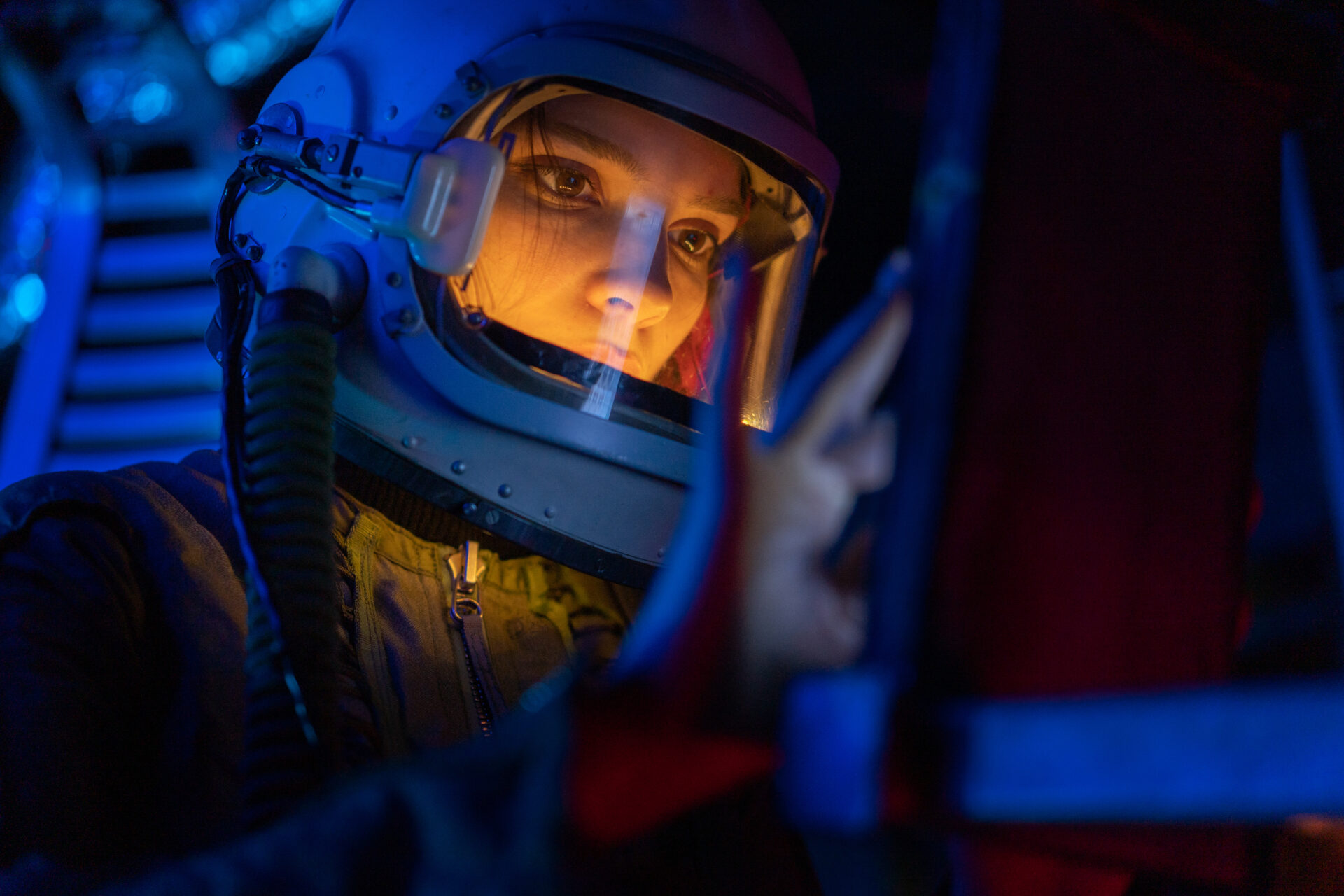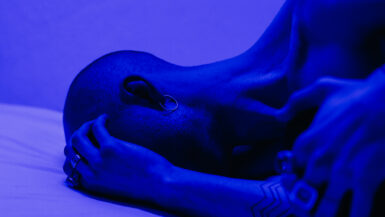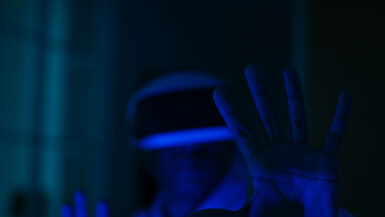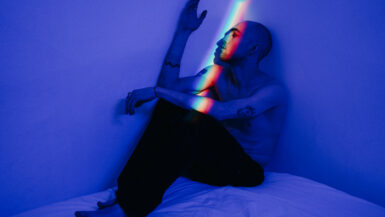In today’s fast-paced, technologically driven world, it is crucial to understand the implications of various environmental factors on our health and well-being. One such factor, blue light, has been the subject of extensive research and debate in recent years. In this comprehensive article, we delve into the intriguing connection between blue light exposure and sleep patterns in animals. By examining the latest scientific findings and drawing from a diverse range of studies, we aim to provide a thorough understanding of how blue light affects sleep, and subsequently, productivity. Furthermore, our discussion will explore the potential consequences and benefits of blue light exposure, offering valuable insight for both researchers and the general public alike. Join us as we unravel the complex relationship between blue light and sleep, and discover the impact it has on the intricate world of animals.
Examining Sleep Quality in Animals Exposed to Blue Light
As we delve deeper into the intricacies of the connection between blue light and sleep in animals, it’s essential to investigate the impact of blue light exposure on sleep quality. In this subsection, we will explore various studies conducted on different species and the effects of blue light on their sleep patterns. Additionally, we will discuss the implications of these findings and offer insights into how these consequences might relate to human sleep.
The Disruption of Circadian Rhythms in Animals
One of the most significant consequences of blue light exposure in animals is the disruption of their circadian rhythms. The circadian rhythm is an internal clock that regulates sleep-wake cycles and various other physiological processes in animals, including humans. Studies have shown that exposure to blue light, particularly during the evening or nighttime, can disrupt this natural rhythm, leading to sleep disturbances and reduced sleep quality.
Impact of Blue Light on Sleep Duration and Efficiency
Research has also demonstrated that blue light exposure can affect not only the timing of sleep but also its duration and efficiency. In various animal studies, prolonged exposure to blue light resulted in shorter sleep durations and decreased sleep efficiency. This implies that blue light exposure might have a negative impact on the overall restorative function of sleep, leaving animals feeling less refreshed and potentially affecting their overall health and well-being.
Blue Light and the Release of Melatonin
Melatonin is a hormone that plays a crucial role in regulating sleep in animals. It is produced by the pineal gland and its release is stimulated by darkness, while exposure to light, especially blue light, inhibits its production. Studies have found that exposure to blue light can suppress melatonin release in animals, leading to difficulties in falling asleep and maintaining sleep. This disruption of melatonin production can have a significant impact on sleep quality and, consequently, on overall health.
Overcoming Blue Light’s Impact on Sleep During Stressful Times
During periods of increased stress, the importance of good sleep quality becomes even more crucial for animals, including humans. In these cases, overcoming the negative effects of blue light exposure is essential for maintaining healthy sleep patterns. There are various strategies that can be employed, which are discussed in-depth in our article “Overcoming Blue Light’s Impact on Sleep During Stressful Times“. By implementing these techniques, animals can mitigate the effects of blue light exposure and improve their overall sleep quality.
In summary, the connection between blue light and sleep in animals is multifaceted and complex. Blue light exposure has been shown to disrupt circadian rhythms, affect sleep duration and efficiency, and suppress melatonin production, all of which can negatively impact sleep quality. By understanding these effects and implementing strategies to overcome them, animals can maintain healthy sleep patterns and promote overall well-being.
Blue Light Exposure and Its Effect on Animal Circadian Rhythms
The impact of blue light exposure on animal circadian rhythms is a crucial aspect of understanding the relationship between blue light and sleep. In this subsection, we will delve into the complex world of circadian rhythms, exploring how blue light exposure can disrupt these intrinsic biological clocks in animals. Furthermore, we will discuss the potential implications of these disruptions on the overall health and well-being of animals.
Understanding the Intricacies of Animal Circadian Rhythms
Circadian rhythms are biological processes that follow a 24-hour cycle, regulating various physiological functions such as sleep-wake cycles, hormone release, and metabolism. These internal clocks are essential for maintaining the overall health and well-being of animals. They are influenced by external factors, such as light and temperature, with blue light playing a particularly important role in the regulation of circadian rhythms.
How Blue Light Exposure Disrupts Animal Circadian Rhythms
Blue light exposure, specifically during the evening or nighttime hours, can interfere with the synchronization of circadian rhythms in animals. This is primarily due to the suppression of melatonin production, which is essential for regulating sleep-wake cycles. Melatonin levels are typically higher during the dark phase of the day, promoting sleep. However, exposure to blue light can hinder melatonin release, leading to a disruption in the natural sleep-wake cycle and, consequently, impacting the overall health and well-being of animals.
Adapting to Different Light Environments: The Role of Cultural Differences
Interestingly, animals have evolved to adapt to various light environments, and the impact of blue light exposure on sleep and circadian rhythms can vary across species. To learn more about these differences, we highly recommend reading our article on “Blue Light and Sleep: Exploring Cultural Differences“. By understanding these variations, scientists and researchers can better comprehend the intricate relationship between blue light exposure and animal sleep patterns.
Implications of Disrupted Circadian Rhythms on Animal Health
Disruption of circadian rhythms due to blue light exposure can have significant consequences on the overall health and well-being of animals. Altered sleep-wake cycles can lead to sleep disturbances, reduced sleep quality, and increased stress levels. Additionally, disrupted circadian rhythms have been linked to various health issues, including metabolic disorders, cardiovascular diseases, and weakened immune systems.
Ultimately, the relationship between blue light exposure and animal circadian rhythms is a complex and multifaceted topic. By understanding the adverse effects of blue light on these intrinsic biological clocks, researchers can gain valuable insights into the intricate connection between blue light and sleep in animals. Furthermore, this knowledge can help to develop strategies to mitigate the impact of blue light exposure, ultimately promoting healthier sleep patterns and overall well-being for animals.
How Blue Light Interferes with Melatonin Production in Animals
In order to better understand the connection between blue light and sleep in animals, it is essential to examine the role of melatonin in sleep regulation and how blue light exposure can interfere with its production. In this subsection, we will delve into the intricacies of melatonin production in animals and explore the various ways blue light can disrupt this vital process, ultimately affecting sleep quality and overall health.
The Significance of Melatonin in Sleep Regulation
Melatonin is a hormone produced by the pineal gland in the brain, playing a crucial role in regulating sleep-wake cycles in animals. The release of melatonin is influenced by the presence of light and darkness, with higher levels typically observed during the dark phase of the day. As melatonin levels rise, it signals to the body that it is time to sleep, promoting feelings of drowsiness and relaxation. Consequently, any factors that interfere with melatonin production can have a significant impact on sleep quality and overall well-being.
Blue Light: A Potent Inhibitor of Melatonin Production
Blue light, which has a wavelength of 480 nanometers, has been found to be particularly effective at suppressing melatonin production in animals. When animals are exposed to blue light, especially during the evening or nighttime, it can hinder the release of melatonin, leading to difficulties in falling asleep and maintaining sleep. This disruption in melatonin production can result in a range of sleep disturbances, as well as various other health issues.
Effects of Blue Light Exposure on Melatonin Production Across Species
Interestingly, the impact of blue light on melatonin production can vary across different species. Some animals may be more sensitive to the effects of blue light, while others may have developed adaptations to cope with varying light environments. It is essential for researchers to consider these variations when studying the connection between blue light and sleep in animals, as it can provide valuable insights into the complex relationship between blue light exposure and melatonin production.
Strategies to Mitigate the Impact of Blue Light on Melatonin Production
Given the detrimental effects of blue light on melatonin production and, consequently, sleep quality in animals, it is important to develop strategies to minimize these impacts. Some potential solutions include reducing exposure to blue light during the evening and nighttime, using blue light-blocking devices or filters, and promoting a regular sleep-wake schedule. By implementing such strategies, animals can better maintain healthy melatonin levels and promote restorative sleep.
In summary, the interference of blue light with melatonin production in animals is a key factor in the connection between blue light and sleep. Blue light exposure, particularly during the dark phase of the day, can disrupt melatonin release and lead to sleep disturbances, ultimately affecting overall health and well-being. By acknowledging these effects and adopting strategies to minimize blue light exposure, animals can maintain healthy sleep patterns and support their overall well-being.
Blue Light and Nighttime Activity in Nocturnal Creatures
In this subsection, we will explore the intriguing relationship between blue light exposure and nighttime activity in nocturnal animals. We will delve into the unique adaptations of these creatures to their light environment and examine the potential effects of artificial blue light on their behavior and sleep patterns. By shedding light on this fascinating aspect of the connection between blue light and sleep in animals, we aim to provide valuable insights into the complex world of nocturnal creatures and their interaction with blue light.
The Intricacies of Nocturnal Animal Adaptations
Nocturnal animals have evolved to be active during the night, taking advantage of the darkness to hunt, forage, and carry out other essential activities. These creatures have developed unique adaptations to thrive in low-light conditions, such as enhanced night vision, heightened senses, and specialized circadian rhythms. These adaptations not only allow them to navigate their environment effectively but also enable them to maintain healthy sleep patterns during the day, when they are less active.
Artificial Blue Light: A Disruptive Force in the Nocturnal World
In recent years, the increasing prevalence of artificial light, particularly blue light emitted from electronic devices and LED lighting, has raised concerns about its impact on nocturnal animals. Research suggests that exposure to artificial blue light can disrupt the natural behavior and sleep patterns of these creatures, potentially leading to a range of negative consequences for their health and well-being.
Implications of Blue Light Exposure on Nocturnal Animal Behavior
Artificial blue light exposure can have a significant impact on the behavior of nocturnal animals. For example, it can interfere with their ability to navigate and locate food sources, disrupt mating and reproductive behaviors, and affect their predator-prey interactions. Additionally, blue light exposure can alter the timing and duration of their activity periods, leading to potential disruptions in their circadian rhythms and sleep patterns.
Challenges and Opportunities for Nocturnal Animals in a Blue-Lit World
As the prevalence of artificial blue light continues to grow, nocturnal animals face an increasingly challenging environment in which to thrive. However, this situation also presents opportunities for researchers and conservationists to develop strategies to mitigate the impact of blue light exposure on these creatures. By creating wildlife-friendly lighting solutions, implementing light-reducing measures in urban areas, and educating the public about the importance of preserving natural nighttime environments, we can help to support the health and well-being of nocturnal animals in our ever-changing world.
In essence, the interaction between blue light exposure and nighttime activity in nocturnal creatures is a captivating aspect of the connection between blue light and sleep in animals. Through understanding the unique adaptations of these animals and the potential consequences of artificial blue light on their behavior and sleep patterns, we can gain valuable insights into the intricate relationship between blue light and the world of nocturnal creatures. This knowledge can inform efforts to protect and support the health and well-being of these fascinating animals, as they navigate the challenges of a world increasingly illuminated by blue light.
Strategies for Reducing Blue Light Exposure in Domestic Animals
In this subsection, we will discuss various strategies that can be employed to minimize blue light exposure in domestic animals, ensuring their overall well-being and promoting healthy sleep patterns. These practical solutions are aimed at mitigating the negative effects of blue light on sleep and circadian rhythms while considering the unique needs and requirements of domestic animals.
Creating a Sleep-Friendly Environment
One of the most effective ways to reduce blue light exposure in domestic animals is by creating a sleep-friendly environment that promotes natural sleep-wake cycles. This may involve providing designated sleep areas with minimal exposure to artificial light, particularly during the evening and nighttime hours. Additionally, using dim red or amber lights in the evening can help to maintain a relaxing atmosphere for animals without disrupting their melatonin production.
Limiting Screen Time and Electronic Device Use
As electronic devices such as smartphones, tablets, and televisions are significant sources of blue light, it is crucial to limit their use, especially in areas where domestic animals spend their time. This may involve turning off screens during the evening, or using blue light-blocking screen protectors on devices to minimize blue light emissions. By limiting exposure to electronic devices, pet owners can help to promote healthy sleep patterns in their domestic animals.
Opting for Blue Light-Blocking Lighting Solutions
Another effective strategy for reducing blue light exposure in domestic animals is to replace traditional lighting sources with blue light-blocking alternatives. This may involve using LED lights that emit less blue light, or installing filters on existing light sources to minimize blue light emissions. By adopting these lighting solutions, pet owners can create a more sleep-friendly environment that supports the natural sleep-wake cycles of their domestic animals.
Encouraging Regular Sleep-Wake Schedules
Maintaining a consistent sleep-wake schedule can help domestic animals to better adapt to their environment and minimize the impact of blue light exposure. Pet owners can encourage regular sleep-wake schedules by establishing consistent routines, such as feeding times and exercising their pets during daylight hours. This consistency can help to reinforce the animals’ natural circadian rhythms, promoting healthier sleep patterns and overall well-being.
Educating Pet Owners and Caregivers
An essential aspect of reducing blue light exposure in domestic animals is raising awareness among pet owners and caregivers about the potential consequences of blue light on animal sleep and well-being. By providing information on the impact of blue light and offering practical solutions for minimizing exposure, pet owners can be better equipped to support the health and well-being of their animals.
In summary, there are various practical strategies that can be employed to reduce blue light exposure in domestic animals, promoting healthier sleep patterns and overall well-being. By creating sleep-friendly environments, limiting electronic device use, opting for blue light-blocking lighting solutions, encouraging regular sleep-wake schedules, and educating pet owners and caregivers, we can help to mitigate the negative effects of blue light exposure on our beloved pets. This comprehensive approach ensures that domestic animals can thrive in a world where blue light exposure is an ever-present reality.





Leave a reply